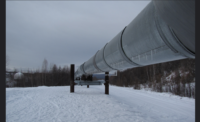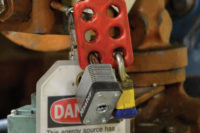Is there a downside to all this growth?
Oil and gas industry front line workers deal with very dangerous materials. There’s a very high cost for accidents both in human terms and financial terms. Because of the flammable nature of oil and gas, there is the potential for life-altering and fatal accidents in all stages of the production process.
Blowouts, spills, leaks, explosions, transportation accidents, and injuries from equipment are everyday dangers.
“The three biggest issues are falls, toxics and catastrophes. These are compounded by the fact that contractors are often used for the most dangerous operations such as turning around a unit or facility,” said Jay Preston, Safetybiz, Inc.
Create a safety culture
Many believe that fundamental change needs to happen in the industry regarding safety if we are to minimize the probability of a major catastrophe. It’s not enough to just report the typical indices we use to indicate the probability of personal injuries such as slips, trips and falls.
Ken Arnold of Ken Arnold Consulting, Inc., who chaired the committee on evaluating the effectiveness of safety management systems for the Transportation Research Board said, “We need to develop a better understanding of how to create a culture of safety. Regulatory agencies put too great of an emphasis on equipment testing and inspection of paperwork. We need to think beyond a culture of compliance. Although a culture of safety is a goal of many organizations and attempts are made to measure it, people often find describing a safe culture in concrete terms difficult. Creating a safety culture involves real efforts at every level of supervision.”
Safety culture principles include:
- Leadership
- Problem identification and resolution
- Personal accountability
- Work processes
- Continuous learning
- Environment for raising concerns
Arnold said, “Another way of thinking about safety culture is that, in a safety culture, the subjective aspects of the organization (attitudes, perceptions and values) are integrated with objective processes and systems. It is this integration and collaboration that support effective safety performance.”
Communication is key
Effective safety communication is also one of the key aspects of developing a safety culture. At oil and gas processing facilities, it’s common to see these signs and labels:
- Warning: High pressure petroleum pipeline
- Danger: Natural Gas. No smoking or open flames.
- Danger: Confined space. Enter by
- permit only
Signs and labels used in this industry need to be able to withstand the rigors of exposure to oil and gas, extremely hot and cold temperatures and marine conditions, according to an industry expert. Worker safety could be compromised if labels become worn out or illegible.
Industry innovations
The oil and gas industry has also spawned a number of manufacturers who are incorporating safety features into their products and working on minimizing the dangers of working conditions.
Jessica Letscher, Gamajet/Alfa Laval Group, explained the benefits of automating tank cleaning.
“Non-transportation fatalities in the oil and gas industry are typically due to falls, entrapment in confined spaces and chemical exposure. While protective gear has been used to reduce incidents, there’s a better way to redesign processes to avoid these hazards,” said Letscher. “For example, automating tank cleaning can achieve all three by removing people from going in the tank, known as confined space entry. Eliminating confined space entry reduces possible contact with hazardous chemicals. If rigs are used to place the tank cleaning equipment in the tank, it further reduces the need to climb on and in tanks, reducing falls.”
Karl Lassberg’s company — T Rex Services — provides hydro excavation services. Hydro vacuum excavation is usually required by the plant and/or pipeline owners because it is a fast and safe way to excavate and is complementary to conventional excavation procedures.
“We relate safety to personal and professional growth. In other words, get away from a policy-driven model (based on rules) and create a loss prevention model (devised to get beyond the behavioral blocks that prevent compliance). Monthly safety bonuses are now standard for eligible employees and additional percentages are offered for overall company safety record. A good safety record is required for promotions,” said Lassberg.
Fruitland Manufacturing’s Chris White is an advocate for safety training.
“There’s always potential for personal injury and equipment damage due to poorly trained equipment operators who lack experience maintaining equipment such as safety valves, hoses, and couplings,” he said.
Fruitland offers free vacuum system training regardless of whose equipment is being used. Fruitland has also introduced a biodegradable vacuum pump oil to minimize contaminating the air, water or ground.
A star player
A major bright spot on a global level is Valero Industries, who manufacture and market transportation fuels and other petrochemical products. Valero subsidiaries employ approximately 10,500 people, and assets include 16 petroleum refineries with a combined throughput capacity of approximately 3 million barrels per day, 10 ethanol plants with a combined production capacity of 1.2 billion gallons per year, and a 50-megawatt wind farm.
Eight Valero refineries are “Star Sites,” prestigious safety recognitions under Voluntary Protection Programs (VPP) of U.S. OSHA and state agencies. Valero refineries achieved their lowest-ever combined employee and contractor recordable-injury rate in 2012, with 0.51 incidents per 200,000 working hours.
Safety awareness
Safety is an ongoing mission in the oil and gas industries. Fortunately, there is a high level of safety awareness among most industry participants. Training and communications will always play an active role to alert workers, managers and others about the dangers of confined spaces, slippery surfaces, exposure to chemicals, natural gases and other hazards of the oil and gas industry.







